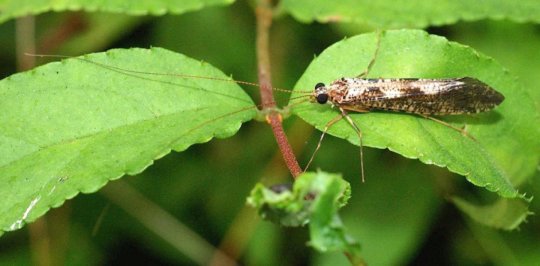[ad_1]
Japanese scientists have shed light on the evolutionary biology and distribution of Stenopsyche caddisflies, also known as sedge flies, a common insect in Japanese rivers and a local delicacy. The new discovery also identified new genetic lineages among previously recognized species.
Their findings were published online in Freshwater Science on July 18th.
Caddisflies are a group of insects that have an aquatic larval stage, while the adults are terrestrial, winged, moth-like insects. Fossilized caddisfly larvae have been found in rocks dating back to the Triassic period, over 250 million years ago, when it is believed the group evolved into one with fully aquatic larvae. Currently, approximately 14,500 caddisfly species from 45 different families have been described worldwide, but many species are still to be recognized.
For their study, the researchers used a molecular approach, analyzing genetic DNA samples collected from the larvae of 21 species of caddisfly from the Stenopsyche genus.
“Stenopsyche caddisflies are the most commonly observed aquatic insect group in Japanese rivers and streams,” explains co-author, Koji Tojo, a scientist from Shinshu University in Nagano, Japan, whose research interests include evolutionary biology and biodiversity. “These caddisflies are popular as a traditional local food, known as ‘Zazamushi’. Thus, it is also an important species group in terms of the ‘Ecosystem Services’ they offer.”
According to Tojo, ‘Zazamushi’ is not only a popular local dish, but is also drawing attention from foreign media. It has recently been introduced in countries such as France, where the demand for insect-based food is booming due to the health and beauty benefits it offers.
In addition to the attention this group of insects is drawing as a protein-packed culinary delight -typically cooked with soya sauce and sugar — the researchers are also interested in learning more about the evolutionary biology and geographical distribution of these critters, which will in turn shed more light on the history of Earth.
Even though Stenopysche caddisflies are considered a common species that are not endangered, Tojo and his team believe that it is very important for the understanding of biodiversity to examine the phylogenetic evolutionary background in detail.
According to Tojo, the results of the study suggest that these caddisflies originated in the south of Asia, and furthermore originated from the Gondwana continent, before dispersing on a global scale over a much longer geohistorical timeframe. “I think that this subject is important as we (humans) explore our roots,” says Tojo.
All organisms without exception, even those living close to us, each have a very long history, Tojo explains. “And their histories are engraved within their cells as their genome information. Knowing the history of that organism leads to a better understanding of that organism. As a result, we will deepen our interests and understanding of biodiversity,” says Tojo, adding that ultimately this will lead to a deeper understanding of the evolution of human diversity too.
Tojo’s ultimate goal is to shed more light on the thought provoking question: ‘How are the evolution of organisms and the history of Earth related?’
To date, Tojo and his team’s research interests have focused largely on the evolutional history of the Japanese insect fauna in relation to the geological history of the Japanese Archipelago, but he is hoping to expand this to the continental scale. “In addition, we would like to deepen the discussion on the mechanisms of species differentiation and creation of diversity in organisms,” says Tojo.
Molecular genetic studies such as this not only provide a wonderful tool for examining the evolutionary history and relationships between individual organisms, populations and even different species, but can also help identify new species that have not been recognized yet, and ultimately help us gain a better understanding of how our planet has evolved.
Story Source:
Materials provided by Shinshu University. Note: Content may be edited for style and length.
[ad_2]















